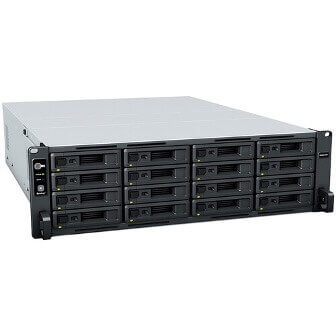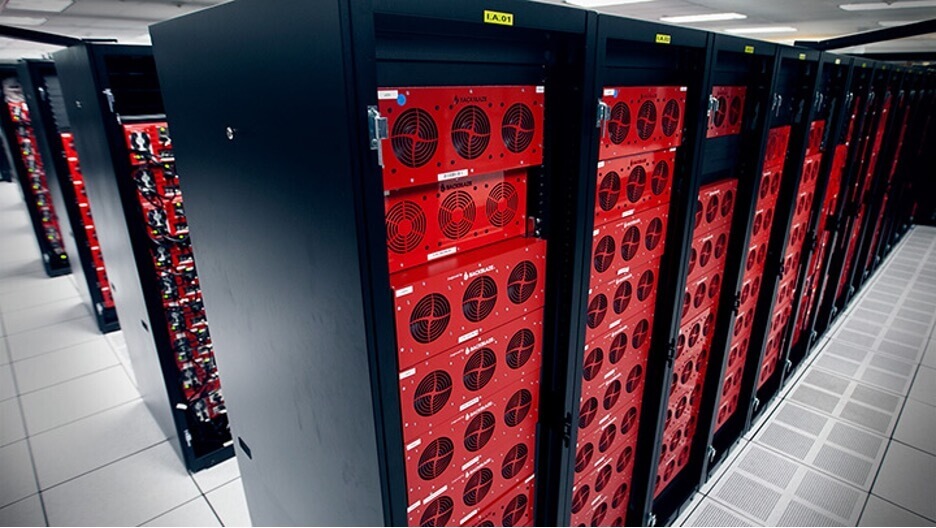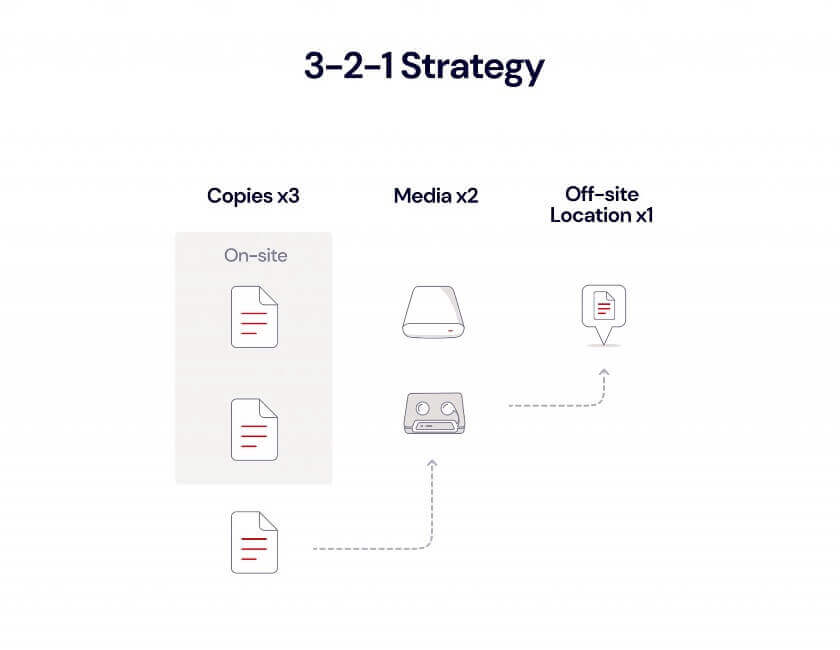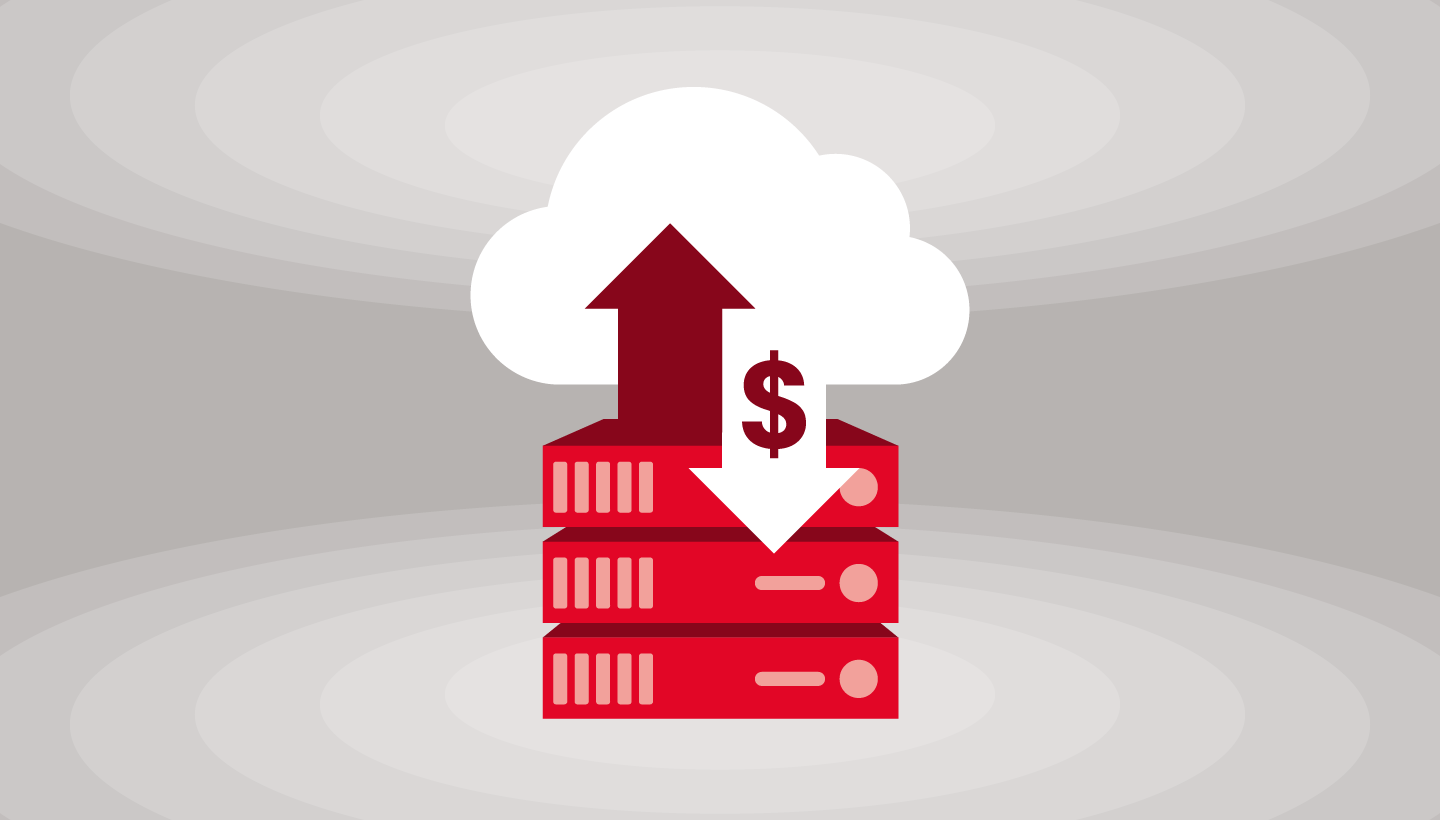
If you’re searching for the best storage solution for your business and finding yourself stuck between network attached storage (NAS) and cloud storage, you’re not alone. Many business owners, IT professionals, and system administrators are stuck in the same dilemma. With plenty of discussions and debates outlining the pros and cons of one or the other, it can be difficult to determine the best storage solution for your specific needs.
This blog aims to cut through the noise and provide clear, actionable insights into NAS and cloud storage, addressing your most pressing questions and helping you make an informed decision. Whether the focus is cost, scalability, security, or accessibility, this guide will help identify the ideal storage solution for your business.
Understanding NAS: What is NAS?
NAS is a file-level storage system designed specifically to provide centralized and shared disk storage for users on a local area network (LAN). Essentially, NAS is a purpose-built computer that operates its own dedicated operating system (OS). It contains one or more storage devices that are configured to create a single shared volume. These storage devices are arranged in a RAID configuration to provide data redundancy and performance.

How does NAS work?
NAS provides access to files using standard network file sharing protocols such as Network File System (NFS) and Server Message Block (SMB). By connecting to the local network, NAS allows users to easily store, access, and collaborate on files without overburdening other servers within the network. This separation of file serving responsibilities helps optimize overall network performance. Management and control of the NAS system are typically performed through a web-based utility accessible over the network, offering a user-friendly interface for administration tasks.
Advantages of NAS
NAS offers several advantages including faster data access, easier administration, simplified management, and many others:
- Cost effective: NAS devices typically involve an upfront purchase cost that includes access to applications from the NAS provider, like Synology Hyper Backup or QNAP Hybrid Backup Sync. This greatly reduces ongoing subscription fees, though you may incur costs if you want to expand your storage capacity with high-capacity storage drives or increase its performance with more powerful processors, etc.
- Data control and security: NAS systems offer extensive control over data storage and security protocols. NAS systems are only accessible on the local office network and to user accounts that can be controlled and managed.
- Performance: NAS provides high-speed access to data over a local network, ensuring quick file retrieval and sharing. NAS generally work as fast as the local office network speeds.
- Scalable storage: Many NAS systems allow additional drives to be added, providing flexible storage expansion, albeit with the cost of additional drives or device upgrades. NAS devices today offer large storage capacities and advanced features for virtualization and application hosting.
- Data redundancy: When equipped with RAID configurations, NAS provides redundancy, ensuring data remains accessible even if one or more hard drives fail.
- Better data management tools: Features such as fully automated backups, deduplication, compression, and encryption enhance data storage efficiency and security. NAS systems also support sync workflows for team collaboration, directory services for user and group management, and services like photo or media management.
Limitations of NAS
While NAS offers numerous advantages for centralized file storage, there are some notable limitations to consider:
- Initial setup and maintenance: Setting up and maintaining an enterprise NAS requires some IT expertise. The configuration process can be complex, and ongoing maintenance may demand technical skills that not all businesses possess in-house.
- Remote access vulnerabilities: NAS systems can be accessed remotely over the internet, creating a private cloud or hybrid cloud solution. While this offers a significant advantage in using your device, just like anything connected to the internet, it also poses security risks. Bad actors can exploit vulnerabilities and gain remote access to the device. To mitigate this, it is crucial to ensure proper configuration, regular updates, and secure access settings.
- Scalability constraints: Although NAS systems allow for storage expansion, they are still limited by the physical capacity of the hardware. Scaling beyond certain limits can require significant investment in new devices or infrastructure.
- Data vulnerability: Data stored on a NAS is susceptible to various threats, including hardware failures, natural disasters, theft, and cyber attacks such as ransomware. While RAID configurations offer some level of data redundancy, they do not protect against all forms of data loss. Regular backups and additional security measures are essential to mitigate these risks.
- Performance overheads: As more users and devices access the NAS, network bandwidth and device performance can become bottlenecks. High demand can lead to slower access speeds and reduced efficiency, especially in larger organizations with extensive data needs.
Understanding cloud storage: What is cloud storage?
Cloud storage is a model of data storage where data is stored on servers located in off-site locations and accessed via the internet. There are two main types of cloud: public and private. Public cloud storage providers maintain servers and are responsible for hosting, managing, and securing the data. Private cloud storage is typically managed in-house and dedicated to a single organization; for example, when a university maintains data centers for access by their wider community. In both cases, providers ensure that the data is always accessible through both public and private internet connections.
What’s the diff: Public vs. private cloud
Public cloud storage services are provided by third-party vendors over the public internet, making them accessible to anyone who wants to purchase or lease storage capacity. These services are designed to offer scalability and reliability, often on a pay-as–you-go basis.
Private cloud storage is dedicated to a single organization where an organization utilizes its own servers and data centers to store data within their own network. It can be hosted on-premises or by a third-party provider, but it’s always behind the organization’s firewall. This model is ideal for businesses that require more control over their data and have stringent security and compliance requirements.
One of the key benefits of public cloud storage is that it eliminates the need for businesses to buy, manage, and operate their own data center infrastructure. This shift allows companies to move from capital expenditure (CapEx) to operational expenditure (OpEx) model. Additionally, cloud storage is elastic, enabling businesses to scale their storage capacity up or down more efficiently and strategically than through tactical hardware investments.

Types of cloud storage architecture
In addition to the benefits of elasticity and scalability gained by adopting cloud storage, you can also combine on-premises storage and different types of public or private cloud storage to uniquely support your business needs. The primary models of cloud storage are:
- Hybrid cloud storage: A hybrid model combines both public and private cloud storage. This allows an organization to decide which data it wants to store in which cloud. Sensitive data and data that must meet strict compliance requirements may be stored in a private cloud while less sensitive data is stored in the public cloud. You could also use hybrid cloud to leverage on-premises storage for performance-sensitive tasks, such as using NAS to edit large media files locally, which are later synced to the cloud.
- Multi-cloud storage: A multi-cloud model involves using two or more public cloud storage services from different service providers. This model helps businesses leverage the best features of each cloud service while enhancing data availability and redundancy. For example, some companies use multiple cloud providers to host mirrored copies of their active production data. If one of their public clouds suffers an outage, they have mechanisms in place to direct their applications or websites to failover to a second public cloud.
How does cloud storage work?
Cloud storage works by allowing users to upload data, such as files, documents, videos, or images to remote servers via the internet. Public cloud storage providers like Amazon, Google, Microsoft, and Backblaze maintain servers in large data centers. The uploaded data can be accessed and managed through web interfaces or APIs, making it highly accessible and flexible.
Cloud storage offers numerous benefits that can greatly enhance business operations. However, there are also a few considerations to keep in mind. Next we’ll look at the advantages and some of the key limitations of cloud storage.
Advantages of cloud storage
- Off-site protection: Cloud storage provides convenient off-site protection for data, ensuring that in the event of a physical disaster (such as fire or flood), data remains safe and accessible from any location.
- Enhanced security: Leading cloud providers invest heavily in advanced security measures—including encryption, multi-factor authentication, Object Lock for immutability, and regular security audits—to protect stored data from unauthorized access and breaches.
- Scalability: Cloud storage services offer virtually unlimited storage capacity. Businesses can easily scale their storage needs up or down based on demand.
- Accessibility: Data stored in the cloud can be accessed from anywhere with an internet connection, facilitating remote work and collaboration.
- Lower maintenance: Cloud providers handle all hardware maintenance, software updates, and security patches, reducing the IT burden on businesses.
- Cost efficiency: Many cloud storage solutions operate on a pay-as-you-go model, allowing businesses to pay only for the storage they use, which can be more cost-effective than investing in on-premises hardware.
Limitations of cloud storage
- Ongoing costs: Unlike on-premises storage solutions such as NAS, cloud storage operates on a subscription-based pricing model. When evaluating cloud storage, businesses should consider the total cost of ownership, including ongoing fees, and weigh these against the benefits of cloud storage.
- Dependence on the internet: Cloud storage relies on a stable internet connection for access and data transfer. Any disruptions in internet connectivity can hinder access to critical files and services, potentially impacting business operations. Ensuring reliable internet service and having contingency plans are crucial for minimizing downtime.
NAS vs cloud storage: A side-by-side comparison
The following table provides a side-by-side comparison of NAS and cloud storage, highlighting key aspects such as cost, scalability, security, and performance. This comparison will help you determine which storage solution best aligns with your business requirements and operational workflows.
| Aspect | NAS | Cloud Storage |
|---|---|---|
| Storage model | File-level storage within a local network | Data stored on remote servers accessed via the internet |
| Performance | High speed access over a local network | Dependent on internet speed and latency |
| Scalability | Limited by physical hardware capacity | Virtually unlimited scalability |
| Cost | Upfront hardware purchase, ongoing investment to expand capacity | Subscription-based, pay-as-you-go model |
| Maintenance | Requires in-house IT maintenance | Maintenance handled by cloud provider |
| Security | Controlled in-house, local network security | Enhanced by provider with encryption and security |
| Data redundancy | RAID configurations for local redundancy | Built-in data redundancy and disaster recovery options |
Hybrid cloud: The best of both worlds
A hybrid cloud solution combines the strengths of both NAS and cloud storage. While NAS offers a centralized location to store and access files, the data stored on the NAS is still vulnerable to data disasters such as floods, fires, or hardware failures. Integrating cloud storage with NAS ensures that there is an off-site backup of your NAS data that securely protects your critical data from virtually any data threat. This approach not only mitigates the risk associated with physical damage to your on-premises NAS equipment but also offers the scalability and remote accessibility benefits of cloud storage. Additionally, this helps you implement 3-2-1 backup protection where three copies of your data are stored in two different storage media (NAS and cloud) with one copy stored off-site in the cloud, protecting against ransomware, hardware failures, natural disasters, and other data threats.

NAS vs. cloud: Which is best for your business?
Choosing between NAS and cloud storage for your business largely depends on your specific use cases and operational needs. NAS provides fast local access, control, and cost efficiency for businesses with stable storage needs and on-premises operations. In contrast, cloud storage offers unparalleled scalability, remote access, and maintenance-free operation, making it ideal for organizations with dynamic storage needs and remote workforcesf. However, many businesses find that a combination of both, known as a hybrid cloud solution, offers the best of both worlds.
Ultimately, the right choice will depend on a thorough evaluation of your business needs and operational workflows. By understanding the strengths and limitations of both NAS and cloud storage, you can make an informed decision that ensures your data is secure, accessible, and available when you need it.
FAQs about NAS and cloud storage
The answer depends on your specific business needs. Cloud storage offers scalability, remote access, and low maintenance. NAS, on the other hand, provides fast local access and higher data control. Each solution has its strengths, and the best choice will depend on your priorities regarding data security, access, and cost.
Yes, many modern NAS devices come with built-in features that allow them to function similarly to cloud storage, or to connect to a cloud storage provider of your choice. These NAS systems can be accessed remotely over the internet, creating a private cloud or hybrid cloud solution. However, it requires proper configuration and a reliable internet connection to ensure seamless remote access.
NAS devices are purpose-built for storage, offering simplicity, ease of management, and lower costs compared to traditional servers. While servers are multifunctional and can handle a variety of tasks, they are more complex to set up and maintain. NAS provides a straightforward solution for file sharing, backups, and media streaming without the need for extensive IT infrastructure. This makes NAS an excellent choice for small to medium-sized businesses that primarily need a dedicated storage solution.
Yes, NAS devices are designed to operate within a local area network (LAN) and do not require an internet connection for local access and file sharing. Users can store, access, and collaborate on files within local networks without internet access. However, for remote access or to leverage additional features such as cloud backups, an internet connection is necessary.




